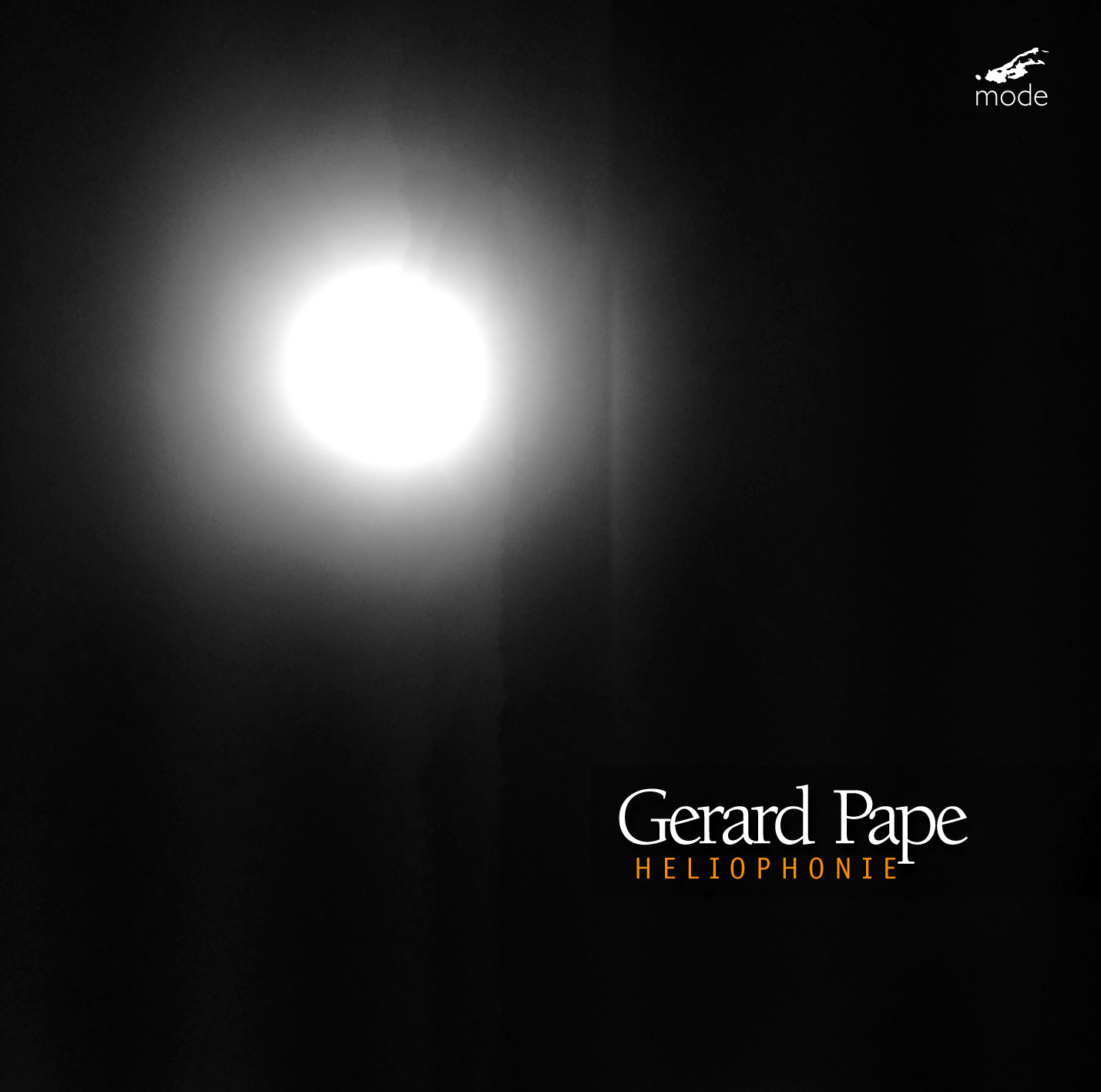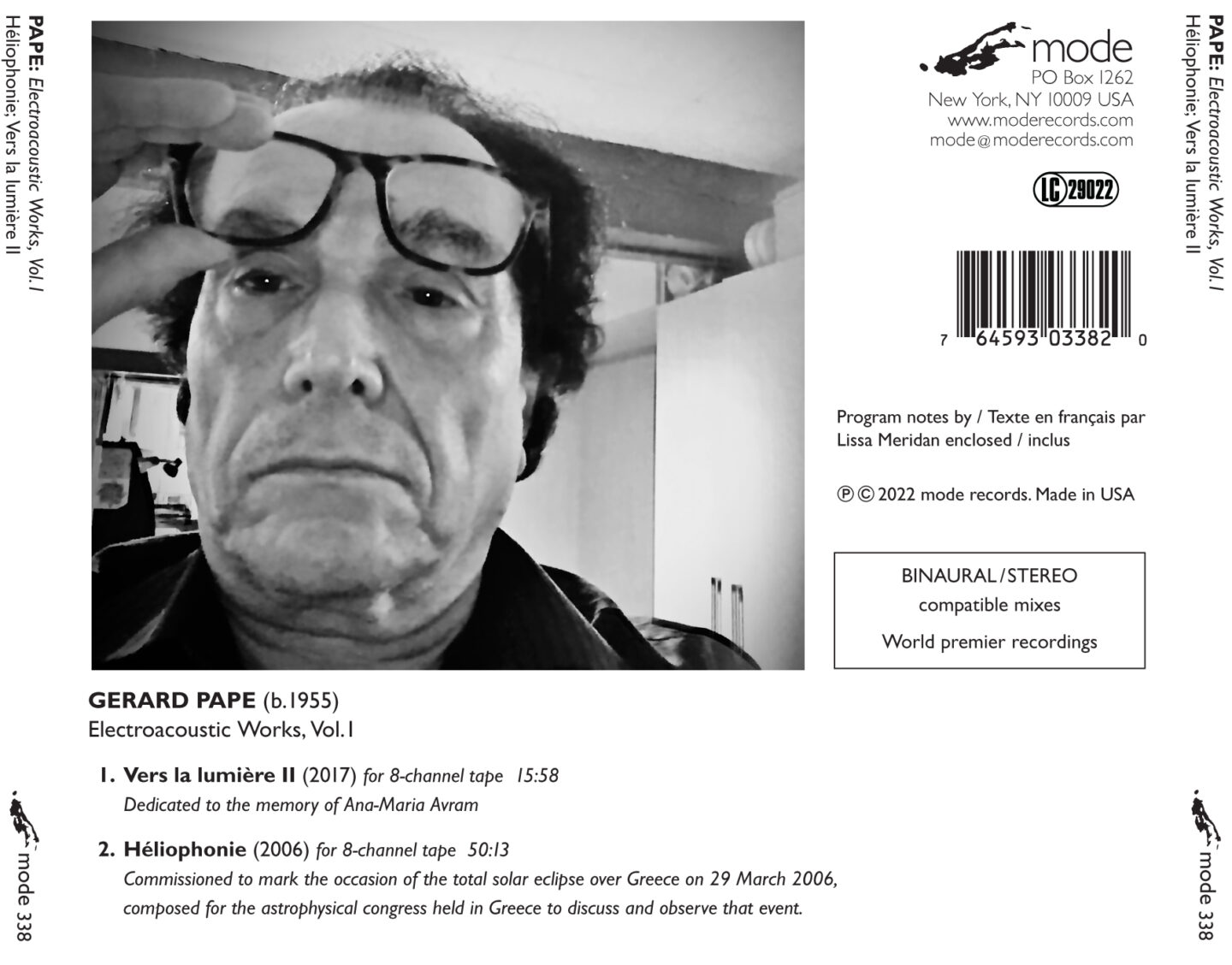GERARD PAPE (b.1955)
Electroacoustic Works, Vol.1
1. Vers la lumière II (2017) for 8-channel tape 15:58
Dedicated to the memory of Ana-Maria Avram
2. Héliophonie (2006) for 8-channel tape 50:13
Commissioned to mark the occasion of the total solar eclipse over Greece on 29 March 2006, composed for the astrophysical congress held in Greece to discuss and observe that event.
This is a BINAURAL / compatible stereo recording
This release gathers two electroacoustic works by Gerard Pape.
Dedicated to the late composer Ana-Maria Avram, Vers la lumière II (2017) is an electroacoustic meditation on the afterlife as a kind of continually evolving sonic universe within which the spirit floats freely, carried along in the arms of the sound itself. Pape weaves a slowly evolving lullaby made of complex and ethereal timbral utterances. Each cry seems to stretch out into eternity, the extremely long release of each sound seems to reach toward a future that never arrives.
The sound material is derived entirely from samples of a Waterphone, a remarkable instrument invented in the 1960s by american artist Richard Waters. The instrument functions on the principle of a steel resonator containing a small amount of water which is surrounded by a series of various sized bronze rods which can be struck or bowed, creating an arrangement of overtones.
Commissioned to mark the occasion of the total solar eclipse on 29 March 2006, Héliophonie follows a strict temporal structure that is inspired by studies in astrophysies describing the various stages of the evolution of the sun.
The first section describes the phase of the birth of the sun, through the formation of cold gas clouds via the accumulation and fusion of particles dispersed in space and the energy released via this process. Pape’s soundworld evokes the internal movement and arresting energy of this atomic accumulation while at the same time constructing the distance and profound depth of the immense void by highlighting the continuum between sound and silence. Dispersed particles of sound fuse like ruptures in the fabric of space, bursting into brilliant and searing clouds of hot gas.
The transition to the second section is introduced by the sudden superposition of vibrato-like variations and oscillating temporal layers that evoke the magnetic fields of sun spots. This quickly gives way to a much more rhythmic gestural movement that is suggestive of the abrupt surges of a flame-thrower.
The third section, describing the distant future of the sun, where clouds of sound seem to expand the space and dematerialise the previous more gestural images. Here the sound seems to move in all directions at once and the listener is immerged in a dense atmosphere of highly frictional sensations. Swept away in a storm of hot winds, all sense of time and space seems to evaporate, giving way to a certain consciousness of the endless expanse of the universe. A profound and repetitive cry seems to emanate from the center of the chaos and the piece takes on an intensely meditative aspect.
The slow death of the sun is depicted in the fourth section by a decomposition of the previous materials, a contraction and dissolution of the sound itself. The multiple layers of rhythmic pulsations become more and more unstable, and the very sonic material seems to come apart from within, creating a sort of temporal vacuum. Time loses its significance as we fall into the abyss that is the universe of Pape’s musical language.
Both works are first recordings.
Liner notes by Lissa Meridan (in English and French).


